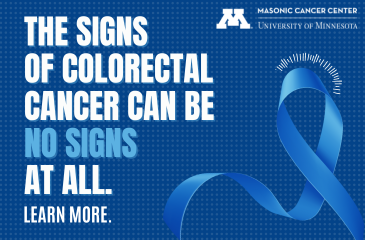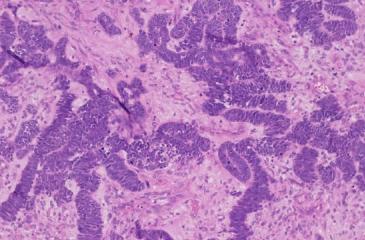News

Colorectal cancer is affecting more younger people than ever. What can we do about it?
You may have seen more news coverage lately about colorectal cancer affecting younger people at an increasing rate. This is sounding some alarm bells in the medical community because we typically assume that cancer risk goes up with age…

U of M-led research identifies predictor of outcomes, chemoresistance for ovarian cancer patients
In a major scientific breakthrough, newly published research from an international consortium led by the Masonic Cancer Center, University of Minnesota has the potential to transform the landscape of ovarian cancer treatment.

Masonic Cancer Center-led research identifies air pollution’s role in childhood cancers—and how greenness might help mitigate it
In a new study led by the Masonic Cancer Center, University of Minnesota, and the U of M Medical School, researchers found that exposure to air pollution and vegetation may impact childhood cancer development. The study was published today…

Cancer disparities and HPV prevention with Dr. April Wilhelm and Dr. Serena Xiong
February is National Cancer Prevention Month. This month we sat down with Masonic Cancer Center, University of Minnesota health equity researchers Drs. April Wilhelm and Serena Xiong to chat about cancer disparities and HPV prevention. Drs.

Escape the Vape video challenge returns for 2024
Students in Minnesota to participate in e-cigarette PSA video contest
The Escape the Vape video challenge, a youth vaping prevention video contest, is back for 2024! Minnesota middle and high school students are invited to create and…

Outreach and engagement: Colleagues come together to improve community care
This article first appeared on MCC's Oncology Live Strategic Alliance Partnership page and was written by Megan Hollasch.
Taking part in community outreach and engagement conversations centered around key matters affecting National…

What are the types of cancer research?
In any battle, knowing and understanding your adversary is crucial. This is true for our fight against cancer as well, and research is the key to our combat strategy. Cancer research plays a vital role in gaining insights into the nature…

Masonic Cancer Center announces fall internal grant awards
The Masonic Cancer Center, University of Minnesota recently announced the awarding of $730,000 in pilot grants through its fall 2023 Internal Grant Program. Support for these grants is made available by the center through a variety of…

Tackling new strategies for canine bone cancer at MCC
A version of this article originally appeared on the AKCCHF website, authored by Sharon M. Albright, DVM, CCRT.

Five MCC faculty members inducted into 2023 UMN Academy for Excellence
Every year, the University of Minnesota works to identify its most distinguished scientists, educators, and clinicians in four key areas: clinical practice, health research, the scholarship of teaching and learning, and team science.…